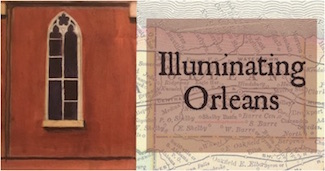In 1965, Kendall was considered for $334 million atomic research facility
Site ultimately went to Batavia, Ill., leaving Kendall’s rural character intact

This dramatic headline appeared in the Times-Union newspaper, December 12, 1965.
By Catherine Cooper, Orleans County Historian
“Illuminating Orleans” – Vol. 3, No. 30

The proposed site was the farmland bounded on the north by Lakeshore Road, on the east by Kendall Road, on the south by Carr Road and on the west by Peter Smith Road. Descriptions of the size of the site varied from 500 acres to 3,000 acres to even 5,000 acres.
A team of scientists and analysts from the Argonne National Laboratories in Chicago, accompanied by construction experts, toured the site on Dec. 11, 1965. They were greeted by Rep. Barber B. Conable Jr., R-Batavia, who was a member of the House Committee on Atomic Activities, Kendall Supervisor Michael Paduchak, and Arthur Eddy who represented the Albion Chamber of Commerce.
Local representatives pointed out that the site would have access to an unlimited water supply from Lake Ontario, and an adequate water supply from Albion for the projected 2,000 employees. Other features such as proximity to airports, the Thruway, as well as an educated employee pool from Buffalo and Rochester colleges, were also emphasized.
Construction of the $334 million plant would take eight years. Salaries and operation costs were anticipated at $60 million annually.
Analyst Thomas H. Fields stressed that the installation would not present any hazard to workers or residents since it was basically involved in a process to investigate nuclear energy. “There is no fallout, the factory is quiet, clean and will look like an academic campus.”
The headlines of the day referred to the facility as an “atom-smasher,” but the preferred current terminology is “particle accelerator.”
In either case, the purpose of the facility was to accelerate particles of atoms to almost the speed of light and then crash them into each other at extremely high speed in order to understand matter, or “the secrets of the Universe.”
Local reaction to the proposal was mixed, according to the Medina Daily Journal. Many residents recognized the increase in land values and the long-range economic benefits for the county. Others regretted the loss of some of the finest farmland in the area, and the displacement of families who had lived there for several generations.
As it transpired, none of the New York State sites were selected. The honor of the location of the Fermi National Accelerator Laboratory (Fermilab) went to Batavia, Il., 45 miles west of Chicago.
When completed, the Batavia site included the Tevatron tunnel, a circular particle accelerator. Buried 25 feet underground, it had a circumference of four miles and was equipped with superconducting magnets chilled to minus 450 degrees Fahrenheit. Over 5,000 tons of armor plating from US Navy warships and former Aircraft carriers were used to shield the outer walls of the accelerator ring.
The Tevatron yielded a rich scientific legacy, including the discovery of the Quark, a fundamental constituent of matter but it was superseded by a faster physics lab in Switzerland and ceased operations on Sept. 29, 2011.
Fermilab is still “solving the mysteries of matter, energy, space and time” and is now designated as a National Environmental Research Park. The public is welcome to explore its science and enjoy its natural areas.
Meanwhile, Kendall retains its rural integrity.






























































